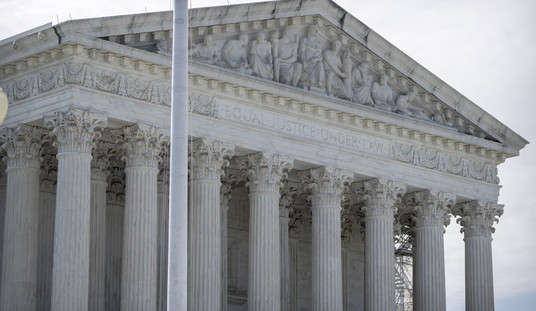A Cincinnati jury has entered a second day of deliberations in the trial of former University of Cincinnati police officer Ray Tensing for the shooting death of black motorist Sam DuBose as DuBose tried to drive away from a traffic stop.
Jurors resumed deliberations Thursday in the murder trial of a white former police officer who said he feared for his life before fatally shooting an unarmed black man during a traffic stop over a missing front license plate in Ohio.
Hamilton County Judge Megan Shanahan had sequestered the jurors Wednesday night after the deliberated for more than four hours and told them to resume Thursday morning.
Before they got the case, Shanahan instructed them to apply the law to the facts presented in court, and to judge the facts “from the perspective of a reasonable officer at the scene,” not in “20-20 hindsight.”
Prosecutors want the jurors to conclude that now-fired University of Cincinnati police officer Ray Tensing “purposely” killed Sam DuBose. Jurors also have the option of convicting him of voluntary manslaughter, meaning he killed in a fit of rage or sudden passion after being provoked.
Tensing, 26, has said he shot DuBose, 43, while being dragged by DuBose’s car as he tried to drive away on July 19, 2015.
The prosecution said evidence including Tensing’s own body camera video contradicted his story.
“The video is the ultimate witness … this video exposes Tensing’s lies,” Hamilton County Prosecutor Joe Deters said during closing arguments.
He said Tensing and his lawyer became “almost comical with their word games,” calling shooting DuBose “stopping the threat” and saying he “perceived to be dragged.”
But defense attorney Stewart Mathews insisted Tensing was trying to keep from being run over.
“He was in sheer terror,” Mathews told jurors. “The evidence is very clear that a car can be just as deadly as a gun or knife.”
He said prosecutors tried to use race as “a smokescreen.” They pointed to Tensing’s T-shirt worn under his uniform that day. The “Great Smoky Mountains” shirt had a Confederate flag on it. Mathews said it had “no evidentiary value.”
City officials met with civil rights and faith leaders in the weeks before the trial, trying to reduce tensions over a racially charged case that brought demonstrators — including Black Lives Matter activists — outside the courthouse. It is among cases nationwide that have raised attention to how police deal with blacks.
Deters told jurors Wednesday that “emotions are high,” but they must decide based on the facts.
Tensing wept on the stand Tuesday. He said his arm was stuck in DuBose’s car at the time and the car was turning toward him.
Let’s be 100% clear on this point: this was a bad shoot by Officer Tensing, and DuBose should not have been shot. His death was a crime for which Officer Tensing needs to pay.
That said, the emotional vitriol from Hamilton County Prosecutor Joe Deters and his insistence that Tensing face a sentence for murder or voluntary manslaughter when firearms experts who have viewed the video suggest a lesser charge is more appropriate may end in a hung jury or an acquittal.
Why? Because Deters may have over-charged the case.
Several very knowledgeable firearms instructors have viewed University of Cincinnati police officer Ray Tensing’s body camera video that captured his shooting of motorist Sam Dubose, and have come to the conclusion that we may be looking at a negligent discharge, not an intentional shooting.
One of them, 2010 Law Enforcement Officer Trainer of the Year Dave Spaulding of Handgun Combatives, makes a compelling case on his Facebook page that the shooting may have been the result of a natural physiological response as Tensing attempted to turn off the ignition of Dubose’s car with his left hand, while his right hand was on the trigger of his gun.
I have watched this multiple times and its tough to explain. What I think may have happened is a case of Inner-limb Response or Sympathetic Muscle Contraction as defined by Dr. Roger Anoka. Basically, what one side of the body does the other side does to a lesser extent….when one hand tightens, so does the other. Its really hard to see, but it is possible that the officer clenched his left hand reaching for the keys and engaged the trigger with his right. Again…hard to tell from just this video…but the driver appears to try and start the car, the officer perceives danger and goes for his pistol. At the same time he reaches for the keys and clenches and the pistol just happens to be aligned with the drivers head. Not good…
Regardless, this officer has problems and I am glad I am not in his shoes. As much as we preach “finger out of the trigger guard” , when a true sympatric interaction occurs, the finger will fall in line with the rest of the hand and fold back as designed. This will result in a finger on the trigger no matter where it starts. I like the idea of having the finger bent when in register but this is no guarantee either. This case will be interesting if it goes to trial…
I want to stress that parasympathetic response would not be legal justification for the shooting, just a possible explanation of what may have occurred from the physiological perspective.
If the case goes to trial—there is always the possibility Tensing will take a plea bargain—his attorney’s will likely try to claim that the body camera video shows the sympathetic muscle response in action, and they will then argue that Tensing mis-remembered the sequence of events of that day when he gave his statement that he shot because he was being dragged (the video suggests he shot Dubose, then he was dragged immediately afterward), and that he was not lying.
Area schools are planning to release students early today in anticipation of unrest that could accompany a verdict in this racially-charged trial.
The evidence does not seem to support a charge of murder according to Ohio law, which requires a purposeful cause of death, and I think it is reasonable for the jury to surmise that Tensing wasn’t “under the influence of sudden passion or in a sudden fit of rage” required for a voluntary manslaughter conviction.
The DeBose family says they will not be happy unless Tensing receives a guilty verdict on the murder charge, and yet, this seems like it was probably an incident involving involuntary manslaughter.








Join the conversation as a VIP Member